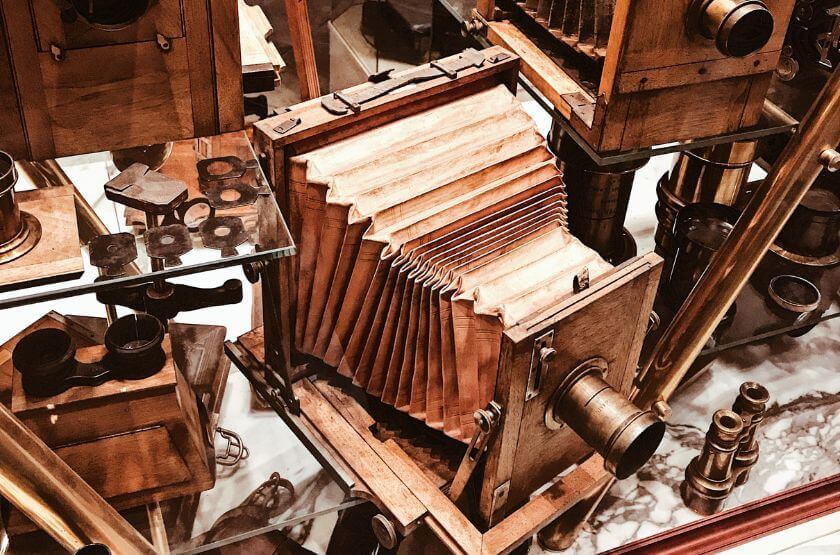Photography is an art form that uses light to capture the world around us. It began when William Fox Talbot used a camera obscura fitted with a pewter plate to make his first photographic negative. He may have created the oldest photograph taken with a camera. Another important step in the history of photography came when Hercules Florence developed a silver-salt paper process, naming it Photographie. This method quickly became a popular form of photography.
 Color photography was possible long before Kodachrome was developed, but few photographers took advantage of it. Early color photos were captured by inventors, scientists, and scientist-magicians. Photographers were also influenced by a new art form called lithography. Today, photography is an important form of artistic expression. It’s possible to create stunning images with even the most basic of methods. Listed below are some examples of early attempts to develop photography.
Objectivity: The objectivity of photography was once questioned, but this has since been proven wrong. While photography has always been a mechanical art form, it can also be a creative process. While cameras limit photographers to the objects that are available, a skilled photographer can incorporate his own creativity into the mechanical reproduction process. Various lenses and filters can change the appearance of an image, while the type of sensitive material used in the camera can alter the contrast between shadows and highlights.
Lenses: Getting the right lens is an important step in taking better photographs. First, choose a standard zoom lens for everyday use. For portraits, opt for a prime lens such as a 35mm or an 85mm. For sports, you may want to get a telephoto lens, or a dedicated macro lens for your subject. Make sure to check your camera’s lens compatibility before deciding which lens to purchase.
Cameras: The smallest cameras have been referred to as a “snapshot,” but they are often used for flat copy photography. These cameras can range from small to extremely large. They are a great way to capture memories and tell stories. Photography can create a beautiful piece of art or capture a fleeting moment frozen in time. The possibilities are endless. If you have a digital camera, you can take photos from any angle.
Film: The earliest film photographers used a process called wet plate collodion. Frederick Scott Archer published his technique in The Chemist in 1851. The process soon became the standard method of film photography. Later, the process was replaced by a gelatin dry plate. In the 1870s, photography has evolved into three distinct subsets, which are known as “negatives”, “transparencies”, and “positives”.
Conceptual: In conceptual photography, a photographer develops a concept into a photograph. In conceptual photography, real objects are depicted in an abstract way. The subjects of this type of photography are generally unrecognizable or not in real life. Often, this is the most unique type of photography. Try your hand at lifestyle photography by shooting people in their natural environments. Additionally, you can photograph animals and plants.
Color photography was possible long before Kodachrome was developed, but few photographers took advantage of it. Early color photos were captured by inventors, scientists, and scientist-magicians. Photographers were also influenced by a new art form called lithography. Today, photography is an important form of artistic expression. It’s possible to create stunning images with even the most basic of methods. Listed below are some examples of early attempts to develop photography.
Objectivity: The objectivity of photography was once questioned, but this has since been proven wrong. While photography has always been a mechanical art form, it can also be a creative process. While cameras limit photographers to the objects that are available, a skilled photographer can incorporate his own creativity into the mechanical reproduction process. Various lenses and filters can change the appearance of an image, while the type of sensitive material used in the camera can alter the contrast between shadows and highlights.
Lenses: Getting the right lens is an important step in taking better photographs. First, choose a standard zoom lens for everyday use. For portraits, opt for a prime lens such as a 35mm or an 85mm. For sports, you may want to get a telephoto lens, or a dedicated macro lens for your subject. Make sure to check your camera’s lens compatibility before deciding which lens to purchase.
Cameras: The smallest cameras have been referred to as a “snapshot,” but they are often used for flat copy photography. These cameras can range from small to extremely large. They are a great way to capture memories and tell stories. Photography can create a beautiful piece of art or capture a fleeting moment frozen in time. The possibilities are endless. If you have a digital camera, you can take photos from any angle.
Film: The earliest film photographers used a process called wet plate collodion. Frederick Scott Archer published his technique in The Chemist in 1851. The process soon became the standard method of film photography. Later, the process was replaced by a gelatin dry plate. In the 1870s, photography has evolved into three distinct subsets, which are known as “negatives”, “transparencies”, and “positives”.
Conceptual: In conceptual photography, a photographer develops a concept into a photograph. In conceptual photography, real objects are depicted in an abstract way. The subjects of this type of photography are generally unrecognizable or not in real life. Often, this is the most unique type of photography. Try your hand at lifestyle photography by shooting people in their natural environments. Additionally, you can photograph animals and plants.
 Color photography was possible long before Kodachrome was developed, but few photographers took advantage of it. Early color photos were captured by inventors, scientists, and scientist-magicians. Photographers were also influenced by a new art form called lithography. Today, photography is an important form of artistic expression. It’s possible to create stunning images with even the most basic of methods. Listed below are some examples of early attempts to develop photography.
Objectivity: The objectivity of photography was once questioned, but this has since been proven wrong. While photography has always been a mechanical art form, it can also be a creative process. While cameras limit photographers to the objects that are available, a skilled photographer can incorporate his own creativity into the mechanical reproduction process. Various lenses and filters can change the appearance of an image, while the type of sensitive material used in the camera can alter the contrast between shadows and highlights.
Lenses: Getting the right lens is an important step in taking better photographs. First, choose a standard zoom lens for everyday use. For portraits, opt for a prime lens such as a 35mm or an 85mm. For sports, you may want to get a telephoto lens, or a dedicated macro lens for your subject. Make sure to check your camera’s lens compatibility before deciding which lens to purchase.
Cameras: The smallest cameras have been referred to as a “snapshot,” but they are often used for flat copy photography. These cameras can range from small to extremely large. They are a great way to capture memories and tell stories. Photography can create a beautiful piece of art or capture a fleeting moment frozen in time. The possibilities are endless. If you have a digital camera, you can take photos from any angle.
Film: The earliest film photographers used a process called wet plate collodion. Frederick Scott Archer published his technique in The Chemist in 1851. The process soon became the standard method of film photography. Later, the process was replaced by a gelatin dry plate. In the 1870s, photography has evolved into three distinct subsets, which are known as “negatives”, “transparencies”, and “positives”.
Conceptual: In conceptual photography, a photographer develops a concept into a photograph. In conceptual photography, real objects are depicted in an abstract way. The subjects of this type of photography are generally unrecognizable or not in real life. Often, this is the most unique type of photography. Try your hand at lifestyle photography by shooting people in their natural environments. Additionally, you can photograph animals and plants.
Color photography was possible long before Kodachrome was developed, but few photographers took advantage of it. Early color photos were captured by inventors, scientists, and scientist-magicians. Photographers were also influenced by a new art form called lithography. Today, photography is an important form of artistic expression. It’s possible to create stunning images with even the most basic of methods. Listed below are some examples of early attempts to develop photography.
Objectivity: The objectivity of photography was once questioned, but this has since been proven wrong. While photography has always been a mechanical art form, it can also be a creative process. While cameras limit photographers to the objects that are available, a skilled photographer can incorporate his own creativity into the mechanical reproduction process. Various lenses and filters can change the appearance of an image, while the type of sensitive material used in the camera can alter the contrast between shadows and highlights.
Lenses: Getting the right lens is an important step in taking better photographs. First, choose a standard zoom lens for everyday use. For portraits, opt for a prime lens such as a 35mm or an 85mm. For sports, you may want to get a telephoto lens, or a dedicated macro lens for your subject. Make sure to check your camera’s lens compatibility before deciding which lens to purchase.
Cameras: The smallest cameras have been referred to as a “snapshot,” but they are often used for flat copy photography. These cameras can range from small to extremely large. They are a great way to capture memories and tell stories. Photography can create a beautiful piece of art or capture a fleeting moment frozen in time. The possibilities are endless. If you have a digital camera, you can take photos from any angle.
Film: The earliest film photographers used a process called wet plate collodion. Frederick Scott Archer published his technique in The Chemist in 1851. The process soon became the standard method of film photography. Later, the process was replaced by a gelatin dry plate. In the 1870s, photography has evolved into three distinct subsets, which are known as “negatives”, “transparencies”, and “positives”.
Conceptual: In conceptual photography, a photographer develops a concept into a photograph. In conceptual photography, real objects are depicted in an abstract way. The subjects of this type of photography are generally unrecognizable or not in real life. Often, this is the most unique type of photography. Try your hand at lifestyle photography by shooting people in their natural environments. Additionally, you can photograph animals and plants. 

